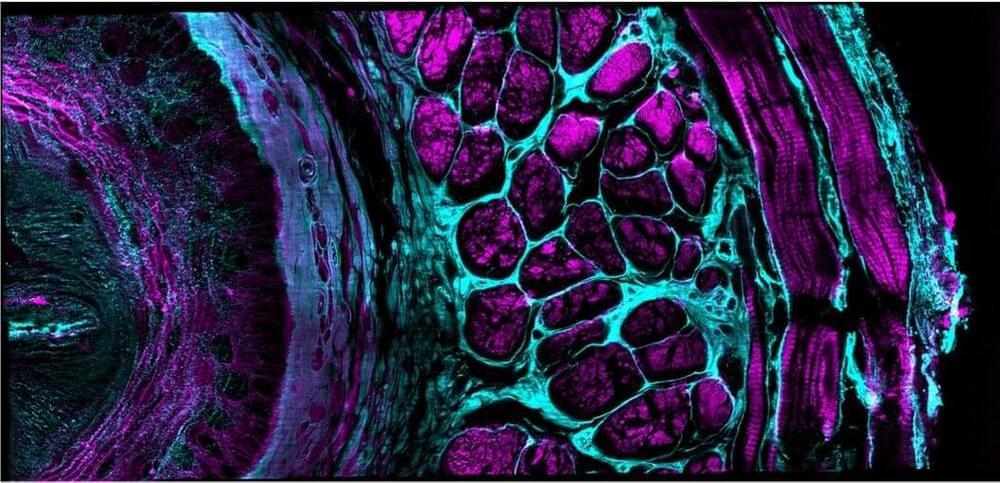The aviation pioneer Bell unveils a new type of eVTOL with high speed, also called HSVTOL, that can fly at 450 mph.
Get the latest international news and world events from around the world.
NVIDIA CMP 170HX mining card with GA100 GPU has a massive heatspreader
NVIDIA CMP 170HX cryptomining card, Source: Linus Tech Tips.
Due to the very limited availability and the high price of this card, there are not actually that many pictures of CMP 170HX on the Internet. Fortunately, Linus was brave enough to take a look under the card’s hood. As it turns out, the GPU has a very large heat spreader completetly covering the whole interposer area.





Researchers Detail Privilege Escalation Bugs Reported in Oracle VirtualBox
A now-patched vulnerability affecting Oracle VM VirtualBox could be potentially exploited by an adversary to compromise the hypervisor and cause a denial-of-service (DoS) condition.
“Easily exploitable vulnerability allows high privileged attacker with logon to the infrastructure where Oracle VM VirtualBox executes to compromise Oracle VM VirtualBox,” the advisory reads. “Successful attacks of this vulnerability can result in unauthorized ability to cause a hang or frequently repeatable crash (complete DoS) of Oracle VM VirtualBox”
Tracked as CVE-2021–2442 (CVSS score: 6.0), the flaw affects all versions of the product prior to 6.1.24. SentinelLabs researcher Max Van Amerongen has been credited with discovering and reporting the issue, following which fixes have been rolled out by Oracle as part of its Critical Patch Update for July 2021.

On-chip frequency shifters in the gigahertz range could be used in next generation quantum computers and networks
The ability to precisely control and change properties of a photon, including polarization, position in space, and arrival time, gave rise to a wide range of communication technologies we use today, including the Internet. The next generation of photonic technologies, such as photonic quantum networks and computers, will require even more control over the properties of a photon.
One of the hardest properties to change is a photon’s color, otherwise known as its frequency, because changing the frequency of a photon means changing its energy.
Today, most frequency shifters are either too inefficient, losing a lot of light in the conversion process, or they can’t convert light in the gigahertz range, which is where the most important frequencies for communications, computing, and other applications are found.

Enhancing the workhorse: Artificial intelligence, hardware innovations boost confocal microscope’s performance
Since artificial intelligence pioneer Marvin Minsky patented the principle of confocal microscopy in 1957, it has become the workhorse standard in life science laboratories worldwide, due to its superior contrast over traditional wide-field microscopy. Yet confocal microscopes aren’t perfect. They boost resolution by imaging just one, single, in-focus point at a time, so it can take quite a while to scan an entire, delicate biological sample, exposing it light dosages that can be toxic.
To push confocal imaging to an unprecedented level of performance, a collaboration at the Marine Biological Laboratory (MBL) has invented a “kitchen sink” confocal platform that borrows solutions from other high-powered imaging systems, adds a unifying thread of “Deep Learning” artificial intelligence algorithms, and successfully improves the confocal’s volumetric resolution by more than 10-fold while simultaneously reducing phototoxicity. Their report on the technology, called “Multiview Confocal Super-Resolution Microscopy,” is published online this week in Nature.
“Many labs have confocals, and if they can eke more performance out of them using these artificial intelligence algorithms, then they don’t have to invest in a whole new microscope. To me, that’s one of the best and most exciting reasons to adopt these AI methods,” said senior author and MBL Fellow Hari Shroff of the National Institute of Biomedical Imaging and Bioengineering.

Nanograins: Study finds curious properties of tiny crystals hold clues to earthquake formation
In Earth’s crust, tectonic blocks slide and grind past each other like enormous ships loosed from anchor. Earthquakes are generated along these fault zones when enough stress builds for a block to stick, then suddenly slip.
These slips can be aided by several factors that reduce friction within a fault zone, such as hotter temperatures or pressurized gases that can separate blocks like pucks on an air-hockey table. The decreasing friction enables one tectonic block to accelerate against the other until it runs out of energy. Seismologists have long believed this kind of frictional instability can explain how all crustal earthquakes start. But that might not be the whole story.
In a study published today in Nature Communications, scientists Hongyu Sun and Matej Pec, from MIT’s Department of Earth, Atmospheric and Planetary Sciences (EAPS), find that ultra-fine-grained crystals within fault zones can behave like low-viscosity fluids. The finding offers an alternative explanation for the instability that leads to crustal earthquakes. It also suggests a link between quakes in the crust and other types of temblors that occur deep in the Earth.